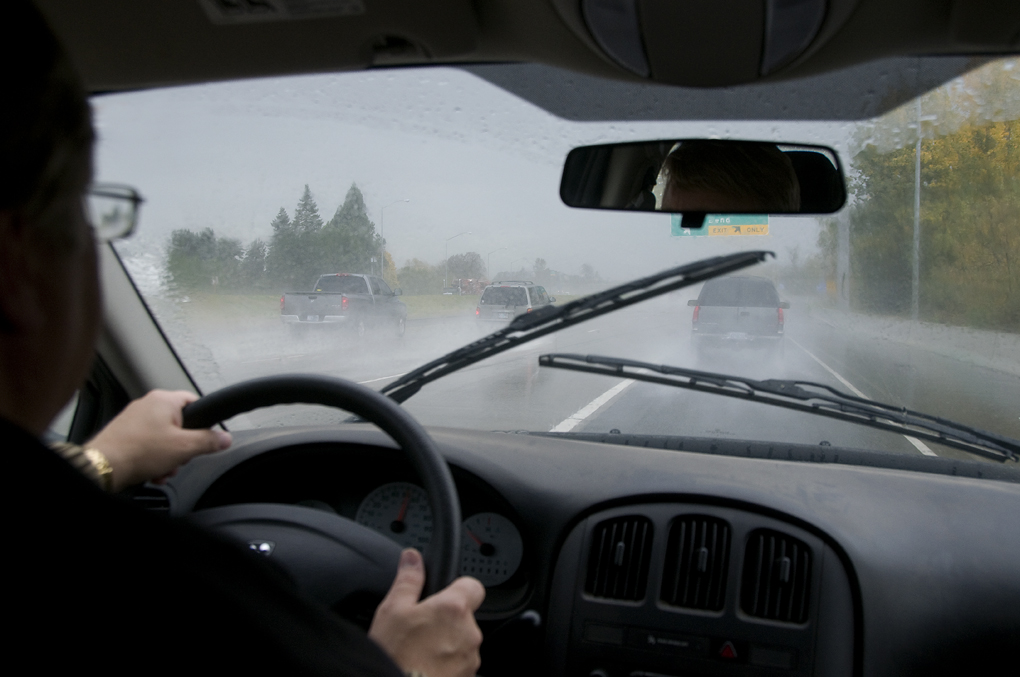Weather conditions require the driver to quickly and efficiently adapt his driving. Not always easy!
When it rains too hard, your vehicle reacts slower, among other things. There are many good driving reflexes that a driver should implement to ensure road safety.
Respect the speed limit!
The speed limit is the basis, the evidence, but too often, drivers don’t realize the impact of excessive speed until it’s too late.
As soon as it rains, the speed limits are lowered: 80 kilometers per hour on roads, 100 on expressways, 110 on highways. But these are maximums.
When the rain is too heavy, braking distances are multiplied by four, and visibility decreases.
Note: the police are sovereign to appreciate excessive speed. The notion of excessive speed, different from speeding, considers the general driving conditions and the driver’s ability to adapt to them.
Headlights against rain
Isn’t it still a reflex? Take it quickly!
Headlights are weighty allies in the raging elements’ turmoil: use the position lights and, if necessary, the dipped headlights (dipped headlights).
Front fog lights are tolerated in case of heavy rain, outside of built-up areas.
However, the use of rear fog lamps is strictly regulated: you must only use them in fog.
Please note: rear fog lights are particularly dazzling and hinder the vehicles following you. Therefore, they should only be switched on if the fog is thick. If you misuse them, you could be fined.
Smooth driving against aquaplaning
It’s used almost as a dirty word because it scares off inexperienced drivers: aquaplaning is a phenomenon that occurs when the tire can no longer evacuate the water that is abundant on the road.
In this case, the tire starts to slide on a cushion of water, and the car becomes uncontrollable. To prevent this from happening, you should :
Significantly reduce your speed when approaching areas with stagnant water.
Make sure you have tires in good condition.
Note: Remember that a worn tire evacuates 5 times less water than a new tire!
Also, it’s best to avoid sudden braking and sudden steering wheel impacts as much as possible to limit the risk of slipping. Choose a smooth ride and use your engine brake to the maximum.
Note: If your steering is not power-assisted, be extra careful: in this case, the natural tendency is to put force into the steering wheel, and therefore to drive more steeply.
Air conditioning against fogging

Who says heavy rain also says fog: you’ve noticed it; fog considerably reduces visibility… And not everyone waits until it has disappeared before starting!
So think of systematically using air conditioning to defog the windows quickly.
Good to know: on some cars, it is possible to combine cooling and heating! Just make sure that the “A/C” button is on and set the desired temperature as normal. If you notice that the mist is still present after a few seconds, it means that you have to force the A/C to start. Lower the temperature to the minimum: the air conditioning will start and will instantly clear the mist.
Check the windshield wipers for wear and tear.
All vehicles typically have at least three wiping modes: intermittent, normal, and fast.
In heavy rain, the fast mode is essential, but it will only be effective if the brushes are in good condition.
The wiper blades have a wear pad on top: green when in good condition, it gradually turns orange over time. When it turns orange, and the edges become noisy, it’s time to change them.
Finally, careful driving and a vehicle in good condition are the two inseparable conditions for safe driving in heavy rain.

